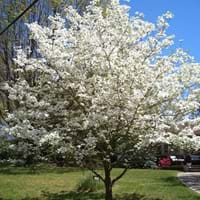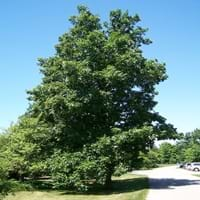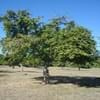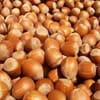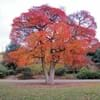Life Span
Perennial
Perennial
Origin
Northeastern United States, Mid-Atlantic United States, Southeastern United States, North-Central United States, Central United States, South-Central United States, Canada
Northeastern United States, Mid-Atlantic United States, Southeastern United States, Central United States, Canada
Types
Amerika Touch-O-Pink, Autumn Gold, Bay Beauty
Northern shagbark hickory, Southern shagbark hickory
Number of Varieties
Not Available
Habitat
Dappled Shade, Woodland Garden
Woodland Garden Canopy
USDA Hardiness Zone
5-8
4-8
Sunset Zone
2b, 3a, 3b, 4, 5, 6, 7, 8, 9
Not Available
Habit
Oval or Rounded
Oval or Rounded
Flower Color
White, Green
Not Available
Flower Color Modifier
Bicolor
Bicolor
Fruit Color
Red
Not Available
Leaf Color in Spring
Green
Not Available
Leaf Color in Summer
Green
Not Available
Leaf Color in Fall
Orange, Crimson
Not Available
Leaf Color in Winter
Not Available
Not Available
Plant Season
Spring, Summer, Fall
Spring, Summer, Fall
Sunlight
Full Sun, Partial Sun, Partial shade
Full Sun
Type of Soil
Clay, Loam, Sand
Loam, Sand
The pH of Soil
Acidic, Neutral, Alkaline
Acidic, Neutral
Soil Drainage
Well drained
Well drained
Bloom Time
Spring
Not Available
Tolerances
Not Available
Not Available
Where to Plant?
Ground
Ground
How to Plant?
Seedlings
Seedlings
Plant Maintenance
Medium
Medium
Watering Requirements
Water the tree thoroughly after planting
Average Water Needs
In Summer
Lots of watering
Lots of watering
In Spring
Moderate
Moderate
In Winter
Average Water
Average Water
Soil pH
Acidic, Neutral, Alkaline
Acidic, Neutral
Soil Type
Clay, Loam, Sand
Loam, Sand
Soil Drainage Capacity
Well drained
Well drained
Sun Exposure
Full Sun, Partial Sun, Partial shade
Full Sun
Pruning
Remove dead branches, Remove dead or diseased plant parts
Remove damaged leaves, Remove dead branches, Remove dead leaves
Fertilizers
Ratio of 12-4-8 or 16-4-8
Apply 10-10-10 amount
Pests and Diseases
Canker, Dogwood anthracnose, Leaf spot, Powdery mildew
Leaf spot, Powdery mildew, Trunk Rot, Verticillium Wilt
Plant Tolerance
Drought
Drought
Flowers
Insignificant
Insignificant
Flower Petal Number
Double
Not Available
Foliage Texture
Medium
Not Available
Foliage Sheen
Matte
Not Available
Attracts
Birds
Mice, Red and Gray Squirrels
Allergy
Mild Allergen
breathing problems, Mouth itching, Sore Throat, Swelling, Throat itching
Aesthetic Uses
Ornamental use, Showy Purposes
Not Used For Aesthetic Purpose
Beauty Benefits
Not Available
Moisturizing
Environmental Uses
Air purification
Air purification
Medicinal Uses
Anthelmintic, Appetizer, Astringent, Diaphoretic, Poultice, Tonic
Analgesic, Antirheumatic
Part of Plant Used
Fruits, Root, Twigs, Wood
Sap, Seeds
Other Uses
Jam, Jelly, Used for making wheel hubs, tool handles, Used to make black ink, Used to make natural paintbrushes
Used as an excellent fuel, Used in pies, cakes, Used to make yellow dye, used to prepare nut milk
Used As Indoor Plant
Yes
No
Used As Outdoor Plant
Yes
Yes
Garden Design
Feature Plant, Foundation, Mixed Border, Shade Trees
Edible, Shade Trees
Botanical Name
CORNUS florida 'Alba Plena'
CARYA ovata
Common Name
Flowering Dogwood, White Flowering Dogwood
Shagbark Hickory
In Hindi
White Dogwood
Shagbark Hickory
In German
Weiß Dogwood
Shagbark Hickory
In French
Blanc Dogwood
Caryer ovale
In Spanish
Dogwood blanco
Shagbark Hickory
In Greek
λευκό Dogwood
Shagbark Hickory
In Portuguese
Branca Dogwood
Shagbark Hickory
In Polish
Biały Dereń
ORZESZNIK PIĘCIOLISTKOWY
In Latin
Cornus alba
Carya
Phylum
Magnoliophyta
Magnoliophyta
Class
Magnoliopsida
Magnoliopsida
Order
Cornales
Juglandales
Family
Cornaceae
Juglandaceae
Clade
Angiosperms, Asterids, Eudicots
Angiosperms, Eudicots, Rosids
Tribe
Not Available
Juglandeae
Subfamily
Not Available
Juglandoideae
Number of Species
Not Available
Season and Care of White Dogwood and Shagbark Hickory
Season and care of White Dogwood and Shagbark Hickory is important to know. While considering everything about White Dogwood and Shagbark Hickory Care, growing season is an essential factor. White Dogwood season is Spring, Summer and Fall and Shagbark Hickory season is Spring, Summer and Fall. The type of soil for White Dogwood is Clay, Loam, Sand and for Shagbark Hickory is Loam, Sand while the PH of soil for White Dogwood is Acidic, Neutral, Alkaline and for Shagbark Hickory is Acidic, Neutral.
White Dogwood and Shagbark Hickory Physical Information
White Dogwood and Shagbark Hickory physical information is very important for comparison. White Dogwood height is 460.00 cm and width 460.00 cm whereas Shagbark Hickory height is 1,830.00 cm and width 1,220.00 cm. The color specification of White Dogwood and Shagbark Hickory are as follows:
White Dogwood flower color: White and Green
White Dogwood leaf color: Green
Shagbark Hickory flower color: Not Available
- Shagbark Hickory leaf color: Not Available
Care of White Dogwood and Shagbark Hickory
Care of White Dogwood and Shagbark Hickory include pruning, fertilizers, watering etc. White Dogwood pruning is done Remove dead branches and Remove dead or diseased plant parts and Shagbark Hickory pruning is done Remove damaged leaves, Remove dead branches and Remove dead leaves. In summer White Dogwood needs Lots of watering and in winter, it needs Average Water. Whereas, in summer Shagbark Hickory needs Lots of watering and in winter, it needs Average Water.
